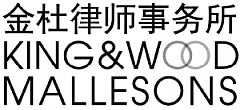- within International Law, Government, Public Sector and Strategy topic(s)
- with Senior Company Executives, HR and Inhouse Counsel
- in United States
- with readers working within the Metals & Mining, Oil & Gas and Telecomms industries
by Li Jinnan, and Wang Shu, Beijing and Roy Zhang and Zhong Xin, Shanghai
As a source of steady income, trust companies had been taking loans off the books of banks and repackaging them up as trust products. China Banking Regulatory Commission ("CBRC") became alarmed when the volumes grew too big and in early July, CBRC abruptly closed down the entire business by ordering trusts to halt all cooperation with banks.
Recently, CBRC has issued a new circular (the "Circular") to allow resume of bank-trust cooperation business on certain conditions. In short, we believe the Circular will bring about changes to the current business model of the bank-trust cooperation. The Circular boasts several worth-noting points:
- The Circular focuses on the bank-trust wealth management business whereby commercial banks on one hand collect funds from clients through issuing wealth management products and on the other, entrust such funds to trust companies for management ("Model A"). The banks' clients have no direct dealing with the trust companies in Model A. Trust products engaging a bank only as a distributor to promote the products ("Model B") are not targeted in this Circular.
- Model A is further categorized as "financing category" and "investment category". A trust company's outstanding balance in the financing category shall be kept at 30% or less of the total wealth management fund under Model A. And in principle, the investment category is barred from private equity investment (with possible flexibility in emerging industries such as new energy remaining to be seen).
- The direct impact of the Circular is the volume of bank-trust
products used as bank loans or debt-like investment (including
typical equity investment attached with a put option) will have to
be reduced to below 30%. This means banks and trust companies will
have to maximize their profits through the remaining 70% investment
category products. However, with the explicit ban in the Circular
on private equity investment which trust companies have an edge
over other peers, there does not seem to be much room for the
profit maximizing:
- Due to the lack of expertise and various restrictions on trust companies participating in the secondary securities market, it is unlikely that majority funds in the investment category will be channeled into the secondary securities market; and
- Trust companies may turn to participate in the national interbank bond market to invest in fixed income products, thus increasing the whole asset base.This would definitely reduce the total return profile and may in turn affect the distribution of wealth management products.
To maximize profits through the 70% investment products and in light of trust companies leading position and experiences in private equity investment, trust companies may find leeway to get around the ban on private equity investment, which may include: (i) using a limited partnership to act as the investment vehicle to channel the funds (the general partner could be a joint venture between trust companies and banks); and (ii) investing in equity-linked products which can be contractual arrangements only without equity ownership. Of course, the feasibility of these structures is subject to CBRC's interpretation of the Circular.
- An alternative is to be more engaged in Model B as it is not targeted in the Circular. The downside, however, is banks' client profile will be largely downsized as only qualified investors (for instance, investors with more than RMB 1,000,000) can take part in trust plans. Further, banks' profits in this business model are likely to be revealed to the clients.
- For the bank-trust wealth management products launched prior to the Circular, banks are required to reflect them on their balance sheet by the end of 2011.The provisioning and capital adequacy requirements similar to bank loans shall be applied.The Circular says the balance sheet restructuring should be carried out according to certain "requirements" but fails to specify what such requirements are.The Circular is silent on the new products launched following the Circular in this respect but we doubt they could be treated differently.
- The Circular requires that all trust products must have a tenor of more than 1 year and stops "financing category" trust products from being structured as open-ended modes.Many bank-trust cooperation products used to finance long-term projects, with several short-term financing to form an "asset pool" in satisfaction with long-term funding needs.Now, for a 3-year project, trust companies may split a 3-year-term trust product into three 1-year-term products to ensure continuous injection of funds into the project, like a relay race.The risk stands where the distribution of the follow-up wealth management products fails to be secured on time.
The content of this article is intended to provide a general guide to the subject matter. Specialist advice should be sought about your specific circumstances.

